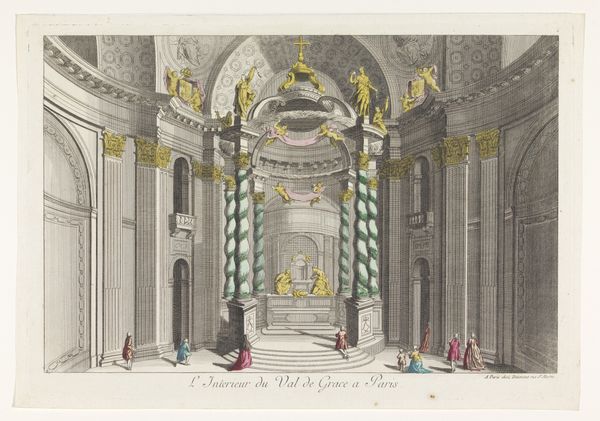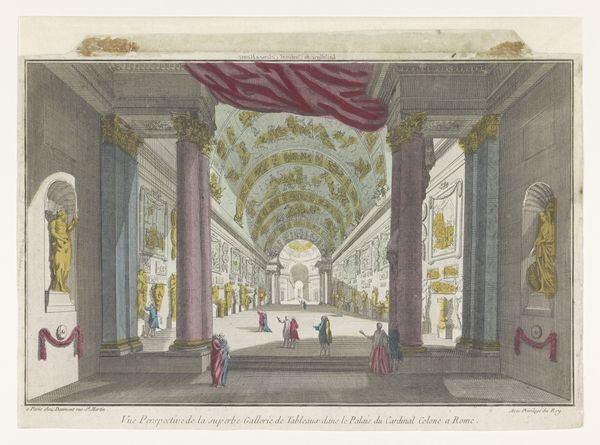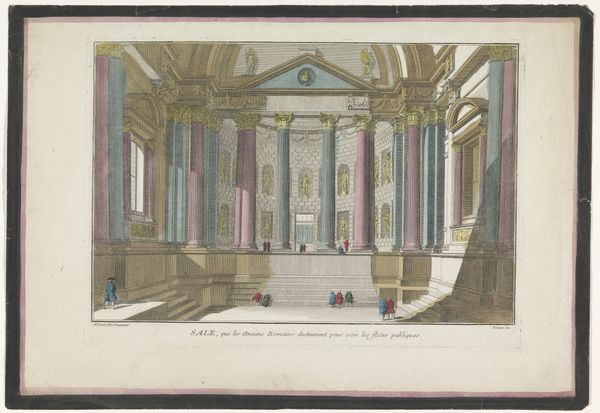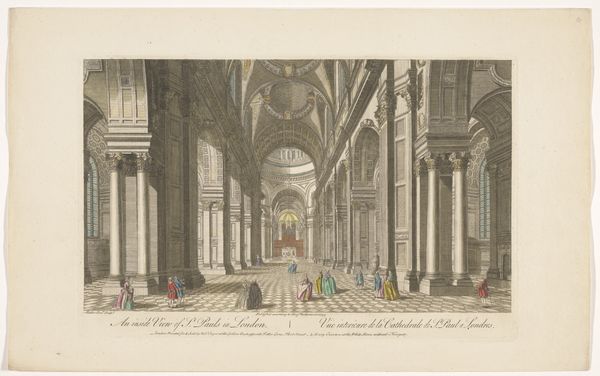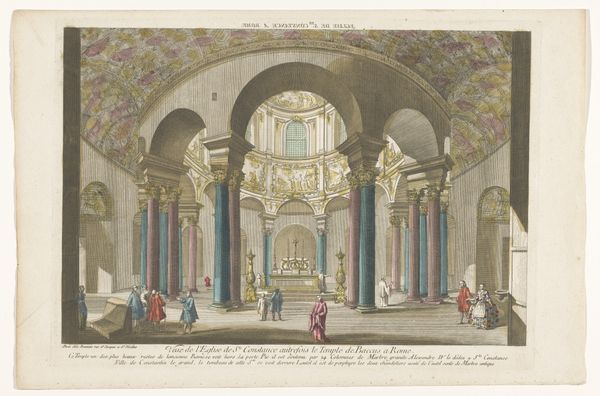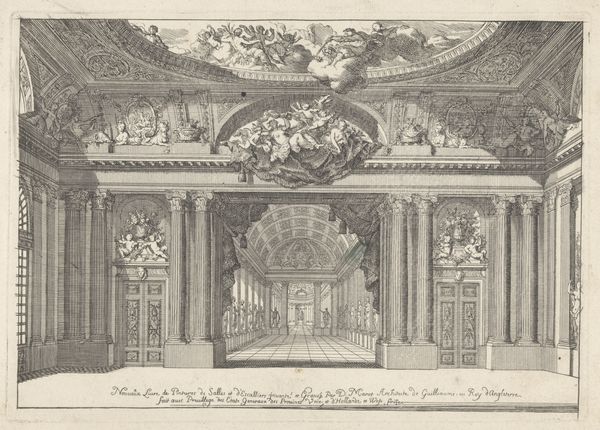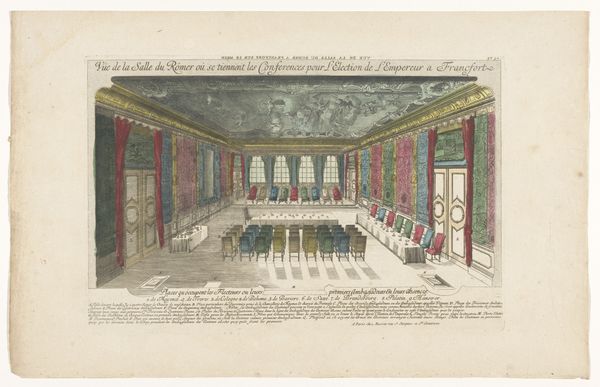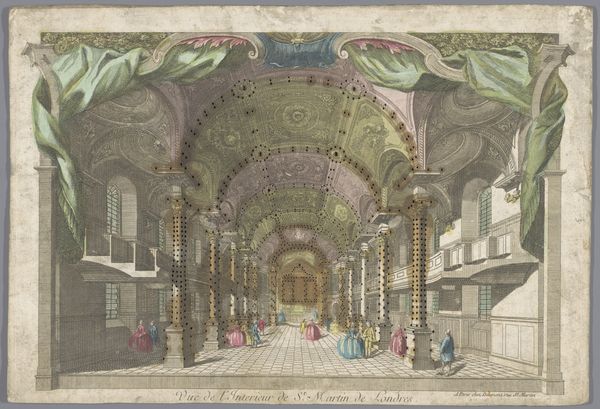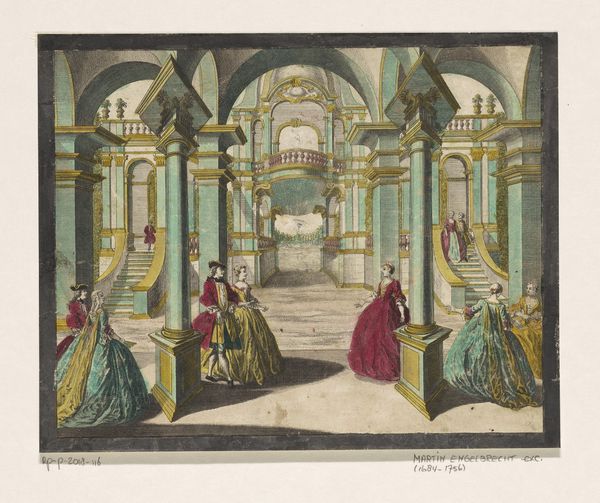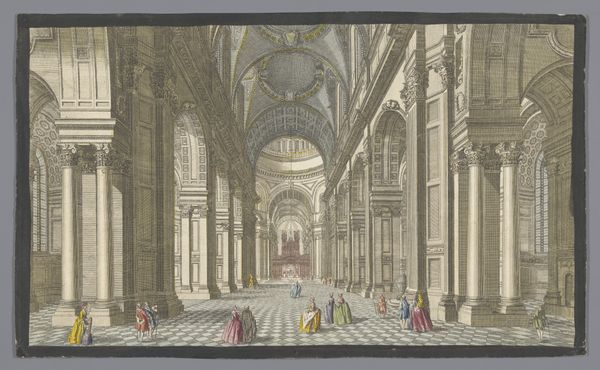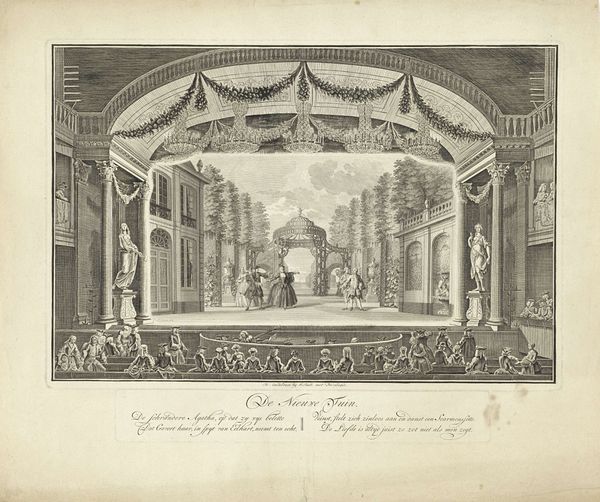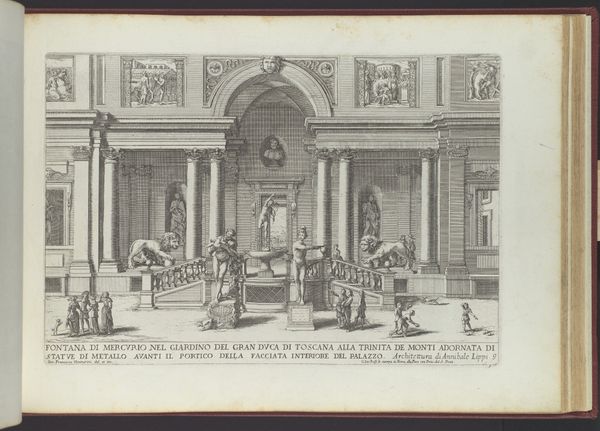
Gezicht op het interieur van de kerk Val-de-Grâce te Parijs 1745 - 1775
0:00
0:00
drawing, print, paper, watercolor, ink, engraving
#
drawing
#
baroque
# print
#
perspective
#
paper
#
watercolor
#
ink
#
coloured pencil
#
cityscape
#
engraving
#
watercolor
Dimensions: height 299 mm, width 428 mm
Copyright: Rijks Museum: Open Domain
Editor: Here we have "View of the Interior of the Val-de-Grâce Church in Paris" dating from 1745-1775 by Jean-François Daumont. It's a print made with ink and watercolor on paper, currently housed in the Rijksmuseum. What immediately strikes me is how the perspective creates such a grand, almost theatrical space. What’s your interpretation? Curator: It's fascinating how Daumont uses printmaking and watercolor together. Prints allowed for wider dissemination of imagery, democratizing access to views of power and prestige, like this grand church. The added watercolor, though, elevates it, imbuing it with an artistic flair beyond mere reproduction. How does this tension play out do you think? Editor: I hadn't considered the tension between reproduction and artistic flair! Maybe the watercolor adds a sense of authenticity, suggesting that this isn’t just propaganda, but also an aesthetic experience? Curator: Exactly. It suggests a carefully cultivated image of royal patronage and religious authority intended for public consumption. The Val-de-Grâce was built under Anne of Austria. Think about what messages it sends, both politically and religiously? Editor: So it’s about control? About showcasing power through architecture? The perspective certainly directs our gaze towards the altar. Curator: It’s definitely a visual manifestation of power. The Baroque style emphasizes grandeur to inspire awe and deference. Now, considering Daumont's audience, what function might these meticulously detailed interior views have served? Souvenirs, perhaps, or something more? Editor: Souvenirs, definitely, but also…perhaps tools for architects and designers? To study perspective, maybe even emulate the Baroque style? Curator: Precisely! The print serves multiple functions, highlighting the intertwined nature of art, politics, and public life in 18th-century Paris. Editor: I see it differently now; it’s much more than just a pretty picture of a church. Thanks for showing me what to look for!
Comments
No comments
Be the first to comment and join the conversation on the ultimate creative platform.
